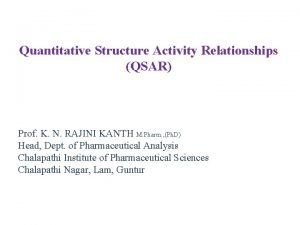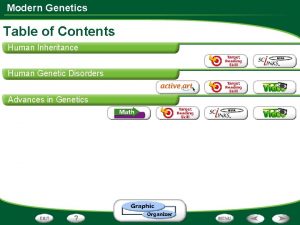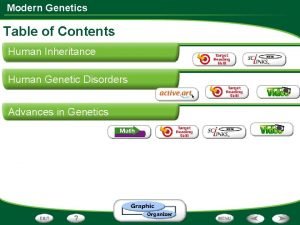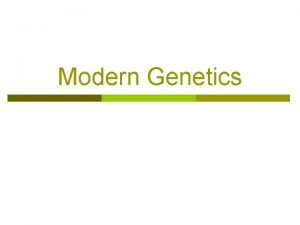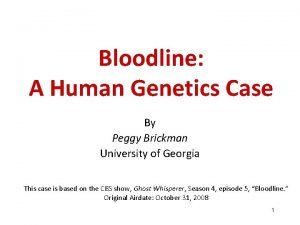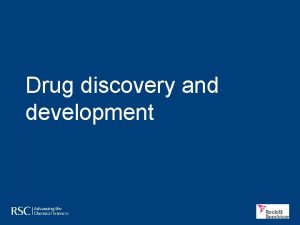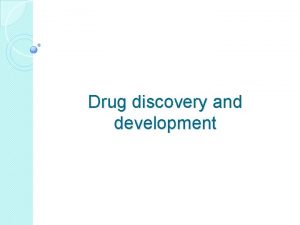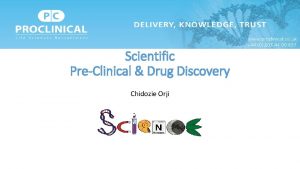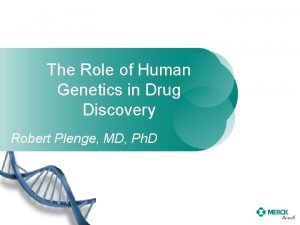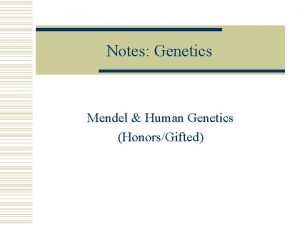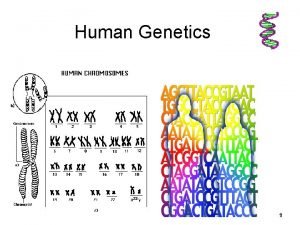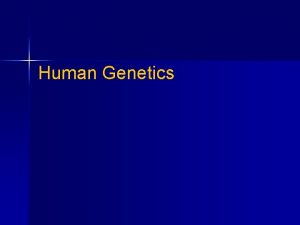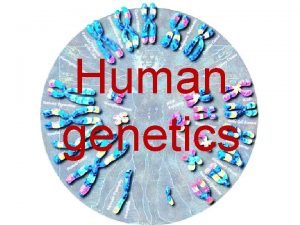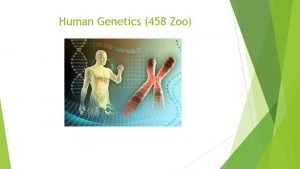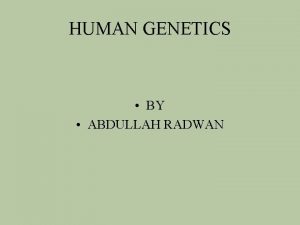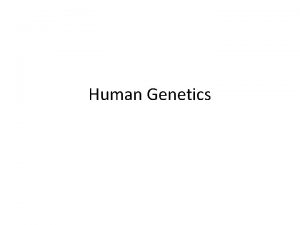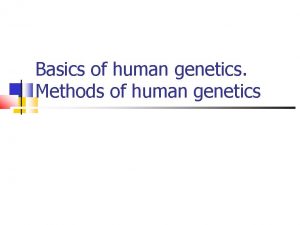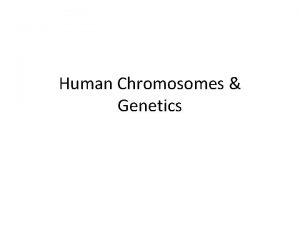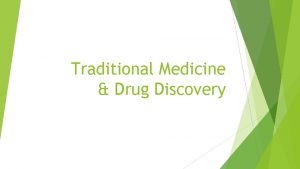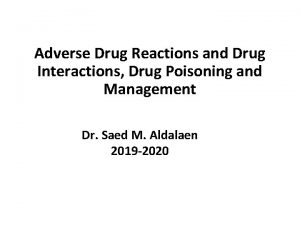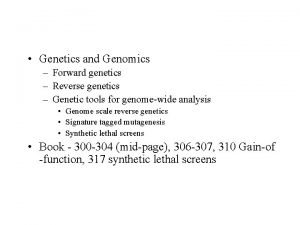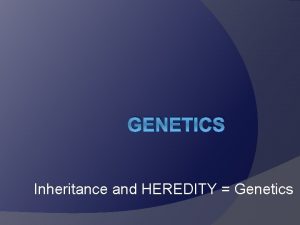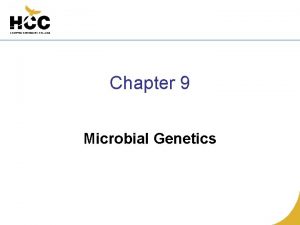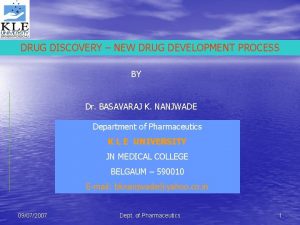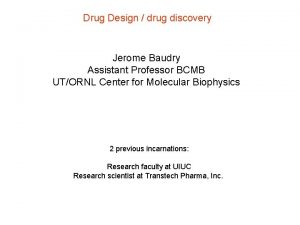Human genetics and drug discovery the future is










































- Slides: 42

Human genetics and drug discovery: the future is now Robert Plenge, MD, Ph. D Broad Institute Medical and Population Genetics (MPG) October 1, 2015

The Problem

Two key challenges in drug development: high failure rate and insufficient innovation Phase II/III failures drive high cost of drug development Rising healthcare costs driving demand for innovative, breakthrough therapies US Healthcare Spending $2. 9 TRILLION in 2013 Prescription Drugs ~10% Attrition problem http: //csdd. tufts. edu/ Hospital Care 32% Physicians and Clinics 20% Innovation problem http: //www. cms. gov/Research-Statistics-Data-and-Systems/ Statistics-Trends-and-Reports/National. Health. Expend. Data/National Health. Accounts. Historical. html

The Attrition Problem …now it is efficacy/safety It was drug metabolism & pharmacokinetics (DMPK)…

The Innovation Problem “to be Earth’s most customer-centric company, where customers can find and discover anything they might want to buy online, and endeavors to offer its customers the lowest possible prices”

What are guiding principles?

Target ID and Validation Lead Optimization Which targets, when perturbed, have a desired effect on human physiology? Causal Human Biology Which biomarkers measure therapeutic modulation in a human system? Target Modulation Assays How can we safely test therapeutic hypotheses in humans as quickly and efficiently as possible? Phase II-III Clinical Trials Early Development Proof-of-concept Clinical Trials Prediction: increase probability of success for breakthrough therapies

Technology is changing the ideal model organism for drug discovery and development It was… Target ID and Validation Lead Optimization Early Development

Today, humans are the model organism of choice for new targets and precision medicine Target ID and Validation Lead Optimization Early Development

Three examples

Target ID and Validation Lead Optimization Which targets, when perturbed, have a desired effect on human physiology? Causal Human Biology Which biomarkers measure therapeutic modulation in a human system? Target Modulation Assays How can we safely test therapeutic hypotheses in humans as quickly and efficiently as possible? Phase II-III Clinical Trials Early Development Proof-of-concept Clinical Trials Prediction: increase probability of success for breakthrough therapies

Human genetics helps to identify potential drug targets to kick-start drug discovery “Drug” “Target” Disease ? Disease “Drug” Healthy …and which one causes disease? …and how do you perturb the target? Healthy vs But, tens of thousands of potential targets… The key steps are: 1. Map genetic differences in those with disease vs healthy; 2. Understand how these genetic differences lead to disease; 3. Develop drugs against these targets that reverse disease processes in the population.

There anecdotal examples of human genetics leading to new drug targets (PCSK 9)… Many genes influence cholesterol levels and risk of heart disease Atherosclerotic Plaque PCSK 9 mutations associated with high and low LDL cholesterol levels (and heart disease risk) Blood Flow …and design studies to find drugs that fix the underlying molecular defects – for example, blocking PCSK 9 lowers LDL (or “bad”) cholesterol in the blood. PCSK 9 LDLR LDL-C m. Ab LDLR Recycling Lysosome

…including many approved therapies, and… Plenge, Scolnick, Altshuler, Nature Reviews Drug Discovery (2013)

…portfolios of drug targets with human genetic support have a higher probability of success

…portfolios of drug targets with human genetic support have a higher probability of success

What is a genetic strategy?

Target ID and Validation Lead Optimization We aspire to determine dose-response at the time of target ID and validation Early Development Phase II-III Clinical Trials We determine dose-response in clinical trials, after many years and millions of dollars

Human Phenotype Pick a human phenotype for drug efficacy X X High X X X Low Identify a series of alleles with range of effect sizes in humans (but of unknown function) LOF Gene function

Pick a human phenotype for drug efficacy Human Phenotype Efficacy X X High X X X Assess biological function of alleles to estimate “efficacy” response curve X X Low LOF Gene function

New target for drug screen! Pick a human phenotype for drug efficacy Human Phenotype Efficacy X High X X X Low Toxicity X Assess biological function of alleles to Assess pleiotropy estimate “efficacy” as proxy for ADEs response curve This provides evidence for therapeutic window at the time of target ID & validation. LOF Gene function

The list of genes with an “allelic series” is growing Gene LOF PCSK 9 low CAD risk, low LDL-C APP low AD, dementia risk SCN 9 A pain insensitivity CARD 9 low IBD risk, high risk for fungal infections TYK 2 low RA, psoriasis, SLE, MS risk, high risk for PID IFIH 1 low T 1 D risk, high risk for PID LRRK 2 PNPLA 3 GOF high LDL-C, high CAD risk high AD, dementia risk neuropathy, hyperexcitability high IBD, AS, PSC risk high T-ALL risk high SLE risk, AG, SM syndromes high PD risk low LDL-C, TG high NAFLD, NASH, PBC, HCC risk … and there are further genes with protective Lo. F variants, for example: SLC 30 A 8 (T 2 D), NPC 1 L 1 (CAD), APOC 3 (CAD), CCR 5 (HIV), MSTN (muscle), LRP 5 (bone), FUT 2 (norovirus resistance), KCNJ 1 (HTN), CTSK (bone)

And we are at the beginning of what will be an explosion of genetic discoveries across populations Cost of genome sequencing continues to drop rapidly… …which results in many more human genomes being sequenced… …and a more accurate molecular understanding of human disease.

Initiatives now link human genetics with clinical phenotypes in a setting for recall UK Biobank HUNT/NTNU - Finnish Founder Population Kaiser-Permanente Geisinger Human Longevity INTERVAL Estonia Precision Medicine Initiative NIH-AMP Kaadorie Biobank Veteran’s Administration ++ + + - Saudia Arabia Genome Project Singapore Biobank Ranking (estimates 10/2015): size/quality of genetic data size/quality of phenotypic data connectivity of genetics & phenotypes setup for recalls & ph 1 trials

Target ID and Validation Lead Optimization Which targets, when perturbed, have a desired effect on human physiology? Causal Human Biology Which biomarkers measure therapeutic modulation in a human system? Target Modulation Assays How can we safely test therapeutic hypotheses in humans as quickly and efficiently as possible? Phase II-III Clinical Trials Early Development Proof-of-concept Clinical Trials Prediction: increase probability of success for breakthrough therapies

What is a biomarker? • Pharmacokinetic (PK) – what the body does to the drug • Pharmacodynamic (PD) – what the drug does to the body Concentration vs. Time Effect vs. Concentration

Genetics can bridge biomarker with clinical data, establishing a causal link for drug discovery G I D vs C G I D

Retrospective example: NPC 1 L 1 protein (target), LDL (biomarker), coronary heart disease (POC) Sequencing NPC 1 L 1 in >7, 000 patients and >14, 000 controls • 15 NPC 1 L 1 inactivating mutations • Carriers w/ lower plasma LDL • 53% relative risk reduction Ph III clinical study in >18, 000 CHD patients • 32. 7% vs 34. 7% w/ primary event • HR=0. 936, p=0. 016 • 6. 4% relative risk reduction

BACE-inhibitor program in Alzheimer’s disease

The history of drug development for Alzheimer’s disease is not pretty – very high failure rates 99. 5% failure rate! Calcoen et al (2015) NRDD

Amyloid hypothesis and Alzheimer’s disease: the role of the APP gene and BACE 1 in disease initiation Ab oligomers Causal human biology • APP, PSEN 1, PSEN 2 mutations cause FAD, increase Ab cleavage • APP-A 673 T variant reduces AD risk, decrease Ab cleavage • Naturally occurring antibodies to Ab oligomers decrease AD risk

Therapeutic hypothesis: BACE-inhibition blocks release of toxic Ab and reduces AD progression (3) Decrease in Ab oligomers in brain protect from AD (1) Protective APP mutation reduces BACE 1 cleavage in vitro (2) BACE 1 inhibitor mimics APP mutation and blocks first step in release of toxic Ab peptides

Ab peptide levels measured in CSF serve as a biomarker for target modulation Drug CSF Biomarker Does the drug engage and modulate the target (PD)?

Is there a dose-dependent relationship in human subjects? Healthy Volunteers Alzheimer’s Patients Drug Low dose High dose CSF Biomarker

MK-8931 lowers Ab levels in CSF from healthy volunteers and Alzheimer’s disease patients Multi-dose, AD patients CSF Ab 40 levels Multi-dose, healthy volunteers >90% lowering

(1) Human mutations are in APP, not BACE (2) No Mendelian randomization study with APP mutations and CSF Ab peptide levels (3) Phase III clinical trials are now underway – the ultimate test of a therapeutic hypothesis!

Target ID and Validation Lead Optimization Which targets, when perturbed, have a desired effect on human physiology? Causal Human Biology Which biomarkers measure therapeutic modulation in a human system? Target Modulation Assays How can we safely test therapeutic hypotheses in humans as quickly and efficiently as possible? Phase II-III Clinical Trials Early Development Proof-of-concept Clinical Trials Prediction: increase probability of success for breakthrough therapies

Orexin Receptor Antagonists (ORAs): a new therapeutic approach to treat insomnia Causal human biology • Autoimmune orexin deficiency in humans results in narcolepsy • Genetic deficiency in dogs leads to narcolepsy, and orexin pathway conserved across species Orexin neurons Monoaminergic neurons Acknowledgements: John Renger, Matt Kennedy, Mark Forman SLEEP VLPO GABAerg ic neurons Wake

Orexin A (pg/ml) Therapeutic hypothesis: Orexin receptor antagonism (ORA) blocks wake promoting signal, enabling sleep Active Inactive Time of Day =ORA

Clinical proof-of-concept (POC) in healthy volunteers: polysomnography (PSG) sleep study • Study Design: double-blinded, placebo-controlled, 5 -period cross-over study in 20 healthy subjects • Measurement: 8 -hr PSG recording 460 Total Sleep Time 96 Sleep Efficiency Index 450 SEI (%) TST (min) 94 440 430 92 90 PBO 10 mg 50 mg MK-4305 100 mg 88 PBO 10 mg 50 mg MK-4305 100 mg

There are new technologies to measure clinical outcomes, including real-time patient monitoring

We live in an amazing time… @rplenge
 Future perfect continuous exercises
Future perfect continuous exercises Future perfect future continuous future perfect continuous
Future perfect future continuous future perfect continuous Nature reviews drug discovery
Nature reviews drug discovery Hansch equation examples
Hansch equation examples Exhausted drug
Exhausted drug Human genetics concepts and applications 10th edition
Human genetics concepts and applications 10th edition Human inheritance modern genetics answer key
Human inheritance modern genetics answer key Genetics graphic organizer
Genetics graphic organizer Modern genetics human inheritance answer key
Modern genetics human inheritance answer key 14-3 human molecular genetics answer key
14-3 human molecular genetics answer key Peggy brickman
Peggy brickman Future continuous future perfect exercises
Future continuous future perfect exercises Past continuous diagram
Past continuous diagram Future plans and finished future actions
Future plans and finished future actions Future perfect x
Future perfect x Kondicional 1 engleski
Kondicional 1 engleski Present perfect future tense
Present perfect future tense Walk simple past tense
Walk simple past tense Future nurse programme
Future nurse programme Past future present
Past future present Present continuous for plans
Present continuous for plans Hình ảnh bộ gõ cơ thể búng tay
Hình ảnh bộ gõ cơ thể búng tay Lp html
Lp html Bổ thể
Bổ thể Tỉ lệ cơ thể trẻ em
Tỉ lệ cơ thể trẻ em Voi kéo gỗ như thế nào
Voi kéo gỗ như thế nào Thang điểm glasgow
Thang điểm glasgow Chúa sống lại
Chúa sống lại Môn thể thao bắt đầu bằng chữ đua
Môn thể thao bắt đầu bằng chữ đua Thế nào là hệ số cao nhất
Thế nào là hệ số cao nhất Các châu lục và đại dương trên thế giới
Các châu lục và đại dương trên thế giới Công thức tiính động năng
Công thức tiính động năng Trời xanh đây là của chúng ta thể thơ
Trời xanh đây là của chúng ta thể thơ Mật thư anh em như thể tay chân
Mật thư anh em như thể tay chân Phép trừ bù
Phép trừ bù Phản ứng thế ankan
Phản ứng thế ankan Các châu lục và đại dương trên thế giới
Các châu lục và đại dương trên thế giới Thể thơ truyền thống
Thể thơ truyền thống Quá trình desamine hóa có thể tạo ra
Quá trình desamine hóa có thể tạo ra Một số thể thơ truyền thống
Một số thể thơ truyền thống Cái miệng nó xinh thế chỉ nói điều hay thôi
Cái miệng nó xinh thế chỉ nói điều hay thôi Vẽ hình chiếu vuông góc của vật thể sau
Vẽ hình chiếu vuông góc của vật thể sau Biện pháp chống mỏi cơ
Biện pháp chống mỏi cơ



